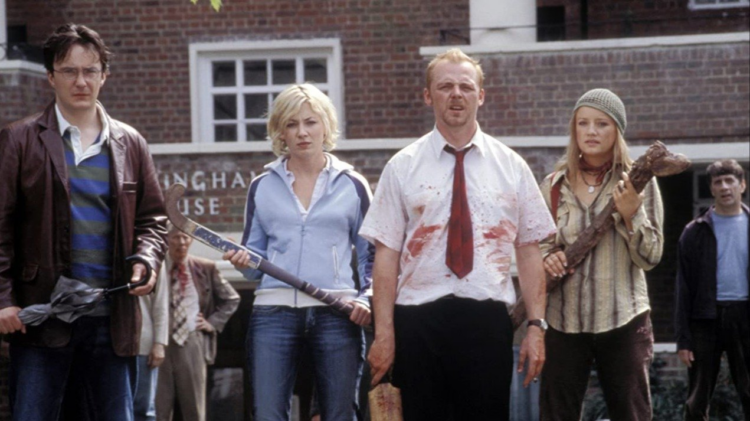When you really think about it, the art of making a movie is basically the art of deception . It’s all about tricking viewers into believing that they’re watching a truly organic story , rather than something that’s been meticulously plotted out.
Filmmakers never want a movie to appear cheap, but budgetary constraints sometimes force the issue. Here are some examples of movies doing their best on a limited budget.
‘Saw’

The 2004 film that started the whole franchise was shot on a limited budget. The budget was so low, in fact, that they couldn’t afford to hire stuntmen. This forced director Leigh Whannel to step in and perform some stunts himself.
‘Rocky’

Rocky grossed an incredible $225 million at the box office against a budget of under a million dollars. To keep costs low, members of Sylvester Stallone’s family played minor roles . His father rings a bell to start a fight while his brother plays a singer on a street corner.
‘Lost’

Mock the magical glowing cave at the end of Lost if you must, but just know that it was only in the show because the budget wouldn’t allow the showrunners to do what they really wanted to do: shoot the scenes at an actual volcano .
‘The Blair Witch Project’

A masterclass in implying, but not showing, the freaky, understated ending of The Blair Witch Project was shot because they had no money for something more complex. Even when they secured additional funding and shot some alternative endings, they wound up sticking with the original, low budget version.
‘Mad Max’

The original Mad Max is regarded as a classic — one that hid its budgetary shortcomings well. Director George Miller admitted that they couldn’t afford extras, which led to a lot of scenes with empty streets. To cover for this, the movie made it clear that things were happening in the near future.
‘Night of the Living Dead’

Much of the zombie genre comes from the precedent set by Night of the Living Dead , and much of what happens in that film happens because it was shot on a shoestring budget. Showing decayed zombies would have been too expensive, so the movie made it canon that only recently deceased people could become zombies.
‘Deadpool 2’

If you’re wondering why Ryan Reynolds pulled double duty as Deadpool as well as the voice of Juggernaut, it’s because the budget wouldn’t allow them to hire another voice actor. It was simply cheaper for Reynolds to take on a second role.
‘Breaking Bad’

“Fly” is a fantastic example of a bottle episode, one in which all of the action takes place in a small space. This wasn’t necessarily done for stylistic reasons, as the episode was shot at a time when the show was over budget.
‘Monty Python and the Holy Grail’

This film mines the fact that it has a low budget for some big laughs. It was originally supposed to end with a big climactic battle, but when this proved too expensive, they went for the anachronistic police arrest instead.
‘Dr. No’

The spider scene in Dr. No , in which Professor Dent deals with a spider while a grid-like shadow in the room evoked a larger spider web, is a clever bit of filmmaking. It was done because the set designer only had $475 to build the scene.
‘The Princess Bride’

The Pit of Despair is an iconic part of the film, but it was only put in as a cost-cutting measure. If the film had been accurate to the book, it would have been the Zoo of Death instead, but it was just too expensive.
‘Shaun of the Dead’

In this instance, the budget didn’t change the film itself, but the soundtrack. Director Edgar Wright couldn’t find the budget for Sinéad O’Connor’s “Nothing Compares 2 U,” so he went with Chicago’s “If You Leave Me Now” instead.
‘Fast & Furious 6’

The big, over-the-top tank chase on a highway was almost a big, over-the-top tank chase in London. The filmmakers wanted to create a set of Piccadilly Circus and fill in the rest with CGI, but in the end it was cheaper to just use an empty highway.
‘John Wick’

It probably would have been cooler if the movie had shown John Wick fighting bad guys in heavy traffic, but he wound up fighting them on an empty dock . This was done because, you guessed it, the budget wouldn’t allow for a more complex scene.
‘Deadpool’

Deadpool took an interesting approach, showing one action scene broken up by flashbacks, rather than multiple action scenes throughout. This was done because the limited budget would only allow them to shoot one action scene, so they did that and broke it up.
‘What We Do in the Shadows’

A bit of lore that’s made the jump from the original film to the TV series is the fact that vampires turn into bats before flying through the air. This was originally done because the wire work to make it look like vampires were flying in their human form would have been too expensive.
‘Birdman’

It felt particularly raw and real when Michael Keaton ran through Times Square in Birdman . As it turns out, he wasn’t running through a crowd of extras in a shut-down Times Square; he was running through a crowd of real people on an ordinary night at Times Square. It was cheaper that way.
‘Austin Powers: International Man of Mystery’

Remember the scene where Dr. Evil wanted sharks with lasers on their heads, but had to settle for sea bass instead? Well, in a case of art imitating life, that was basically what really happened. The budget couldn’t afford sharks, so the filmmakers had to make do with sea bass.
‘Star Wars’

Nowadays no budget is too high for the Star Wars franchise, but back before the films were a proven commodity, there were some strict budget constraints. These limitations forced George Lucas to scrap a more complicated plotline in favor of just shooting more scenes on the Death Star.
‘Halloween’

Halloween deserves its status as an all-time classic horror film, complete with an iconic villain: Michael Myers. As it turns out, though, director John Carpenter’s vision of Myers was basically a vision of an extremely low-budget slasher , as he was looking for a villain who was just a guy wearing cheap coveralls and a spray-painted mask.
















































